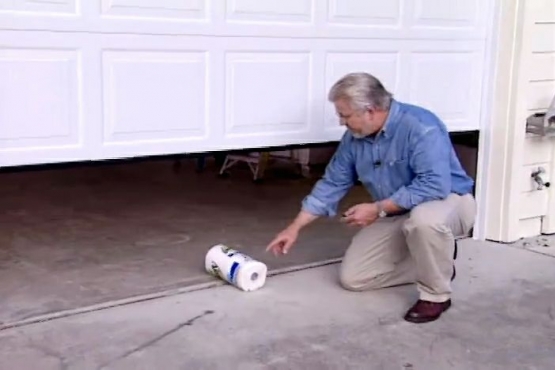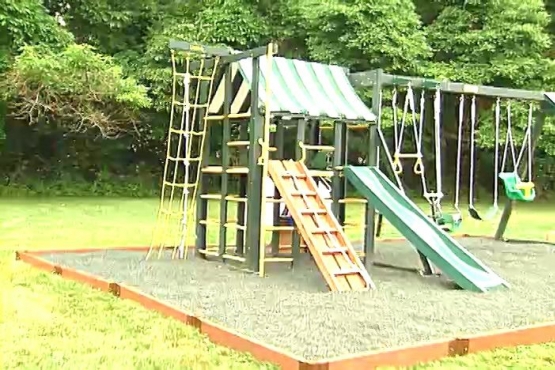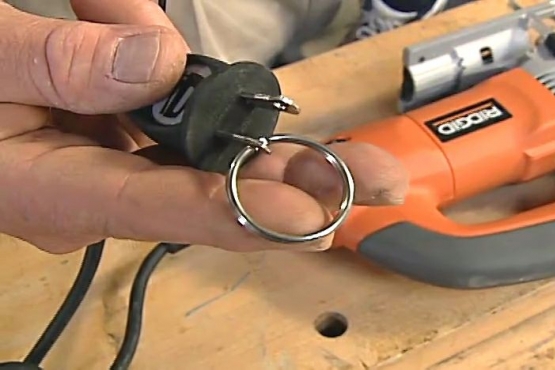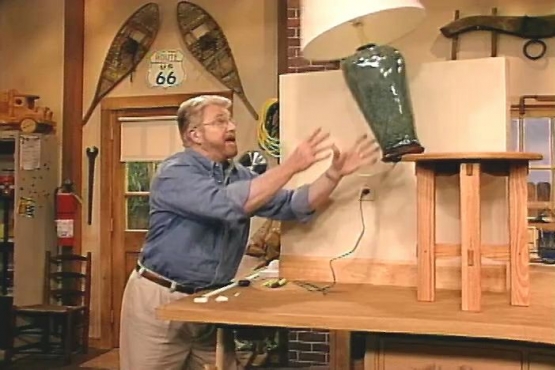Each year more than 300 children under the age of five drown in home swimming pools. Another 2600 end up in emergency rooms with submerging related injuries. Now it's true that most of those drownings and injuries happen during the swimming season.
But during the off season, when the pool is closed, it still represents a hazard. Now inside this bag, I've got about 35 pounds of rock. Now watch what happens when I drop it on this pool cover to simulate a child falling in.
Within seconds of hitting the water, the weight pulls the cover away from the pool deck and begins sinking… the pool cover closing over on top. It’s not difficult to imagine what this would mean to a child or animal that had fallen in.
Not only is my current pool cover potentially dangerous, but it fills with rain water and melting show, and is a catch all for falling leaves and blowing debris.
So, I’ve decided to go online and look for a solution. A search leads me to the Meyco Company. I think I’ve found what I’m looking for. A few days later, Phil Saltzman shows up to begin taking measurements.
First he drives a metal stake into the ground, measures off twenty feet … then drives in a second stake. Next, he makes a series of chalk marks around the pool perimeter a regular intervals … then measures the distance to each mark from stake A and stake B. Now this is where that old high school geomtry comes in. By putting those measurements into a computer … it’s possible to accurately plot the pool’s shape and dimensions and make custom cover that will fit precisely.
A few weeks later, it arrives. After unpacking … the cover is pulled over the pool for a test fit.
Five gallon buckets of water are used as weights so that most of the wrinkles can be pulled out.
Once it’s in place, Phil’s assistant, Gen Gallado, verifies that the scale drawing generated by the computer is the same as the actual cover.
It will take a lot of tension to stretch this cover taut and that will be provided by a series of forty two high tension springs … each of which has to be attached to a reinforced strap, then cover with a protective plastic sleeve.
Next, Gen measures back from the edge of the pool and marks the deck at each strap location. Then Phil sets up his hammer drill and begins boring holes at each mark.
Brass casings are set into the holes and driven into place. Then spring loaded inserts are dropped inside the casings and locked in position with an allen wrench. Finally a tensioning bar is used to slip the end of the spring over the insert.
When the cover comes off in the spring … the protruding inserts can be dropped flush to the deck with a twist of the allen wrench.
Now there's usually more than one reason for doing any home improvement project. In this case, I wanted a pool cover that looked great, make it easier to open the pool in the spring and most of all be safer. Well, I think I got all of those. Now the manufacturers say that this pool cover is strong enough that an elephant can walk across the top. Well, I’m no elephant although I may be headed in that direction, but I am going to see what happens when I try to make it to the other side. Wow, that’s some pool cover.










